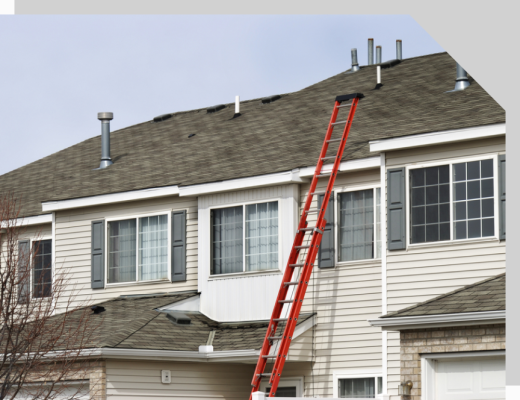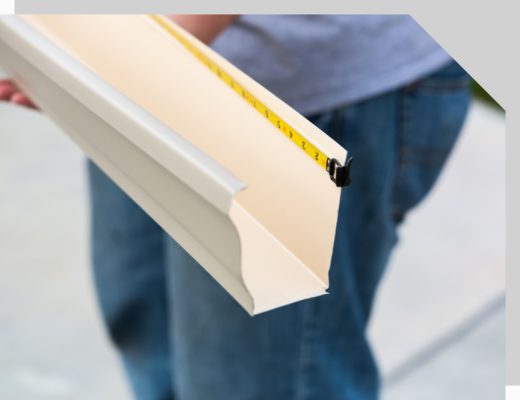Are You Dealing with Any of These Common Gutter Problems?
Your gutters play a crucial role in protecting your home from water damage. They collect rainwater and direct it away from your roof, siding, and foundation. However, even the most well-installed gutter systems can run into problems over time.
In this helpful guide, the expert contractors from Thunder Bay Roofing explain some of the most common gutter issues, including the problems they cause, how to spot them, and what to do about them. If you’re looking for gutter services in Maryland, contact our contractors today at 410-956-7663 for a free estimate.

Common Issues with Gutters
Clogged Gutters
One of the most common gutter problems is clogging. Leaves, twigs, dirt, and other debris can accumulate in your gutters, causing blockages that prevent water from flowing freely. Clogs can cause water to overflow, damaging your roof and exterior walls, and even leading to foundation problems.
Leaky Gutters
Over time, gutters can develop leaks or holes, which can cause water damage to your home if left unaddressed. Leaking gutters may be caused by rust, corrosion, or damage to the gutter material.
Sagging
Improper installation, heavy debris, or snow accumulation can cause your gutters to sag or pull away from your home. Sagging gutters can cause water to overflow or even damage your roof, siding, and foundation.
Separation
Gutters are typically installed in sections that are joined together, and over time, these sections can become separated, causing leaks and other problems.
Animal Infestation
Birds, squirrels, and other animals may build nests or gather debris in your gutters, leading to clogs and potential damage.
Rust
Metal gutters, such as those made of aluminum or steel, can rust over time, leading to corrosion and potential leaks. Rust can also weaken the gutter system, making it more susceptible to damage from heavy debris or snow.
Improper Gutter Slope
Gutters should be installed at a slight angle to allow water to flow toward the downspouts. If the pitch is incorrect, water can pool in certain areas, leading to potential damage.
Cracks or Holes
Harsh weather conditions or accidental damage can cause cracks or holes in your gutters, which can lead to leaks and water damage.
Blockages in Downspouts
Downspouts can also become blocked by debris, preventing proper drainage and causing water to overflow.
Loose or Misaligned Components
Loose or misaligned gutters, downspouts, and other components can cause water to leak or overflow, leading to potential damage to your home’s exterior.

How to Identify Issues
Identifying common gutter issues is an essential part of gutter maintenance. Here are some signs to look out for:
- Clogs: If you notice water overflowing from your gutters during rain, it may be a sign of clogs. Additionally, if you see debris such as leaves and twigs sticking out of your gutters, clogs have likely formed.
- Leaks: Water stains or damage to your walls or ceiling may indicate a leak in your gutters. During rain, if water drips or flows from any part of your gutter system other than the downspouts, it may be a sign of a leak.
- Sagging: If your gutters appear to be pulling away from your home or sagging, it may be due to heavy debris accumulation or improper installation.
- Rust: Check your gutters for signs of rust or corrosion, such as brownish-orange spots or holes. Rust weakens the gutter system, making it more susceptible to damage.
- Improper Pitch: Observe the water flow in your gutters during rain. If you notice water pooling in certain areas, it may be due to an improper pitch.
- Cracks or Holes: Inspect your gutters for any visible cracks or holes, especially after harsh weather conditions.
- Separation: Look for gaps between gutter sections, which can cause leaks and other problems.
- Animal Infestation: Watch out for signs of debris or nesting material in your gutters, which may indicate that birds, squirrels, or other animals are clogging your gutters.
- Blockages in Downspouts: If water isn’t flowing out of your downspouts during rain, it may be due to blockages caused by debris.
- Loose or Misaligned Components: If any of your gutter components appear to be loose, bent, or misaligned, it may cause water to leak or overflow.
When to Call a Professional for Gutter Problems
While some gutter problems can be addressed with DIY solutions or basic maintenance, more serious problems may require the expertise of a professional gutter contractor.
Here are some signs that it’s time to call in a pro:
- Extensive Damage: If your gutters are severely damaged, with large holes or cracks, significant rust, or other major issues, a professional will likely be needed to repair or replace them.
- High-Up or Hard-to-Reach Gutters: If your gutters are in a difficult-to-reach location, such as on a high roof or over a steep incline, it’s best to leave repairs to a professional who has the proper safety equipment and training.
- Lack of Experience: If you’re not comfortable working on gutters or don’t have experience with home repairs, it’s best to hire a professional who can ensure the job is done correctly.
- Water Damage: If you’ve noticed water damage or stains on your walls or ceilings, it’s possible that your gutters aren’t functioning properly and may need professional attention to ensure proper drainage is occurring.
- Foundation Issues: If your gutters are not properly diverting water away from your foundation, it could lead to serious damage over time. A professional can assess the situation and provide a solution to protect your home.

Frequently Asked Questions
It’s possible to patch small cracks or holes in your gutters using a waterproof sealant. However, larger cracks or holes may require replacing the affected section of the gutter. Either way, you would benefit greatly from contacting a professional to assess the damage, before trying to repair it yourself.
To prevent sagging, make sure your gutters are properly installed with the correct slope. Regularly clean your gutters to prevent heavy debris from accumulating and causing excess weight. You can also reinforce sagging gutters with hangers or brackets.
The best way to prevent gutter clogs is to clean your gutters regularly, at least twice a year, or more often if you have overhanging trees or live in an area with heavy rainfall. You can also install gutter guards, which help keep debris out of your gutters while still allowing water to flow freely.
